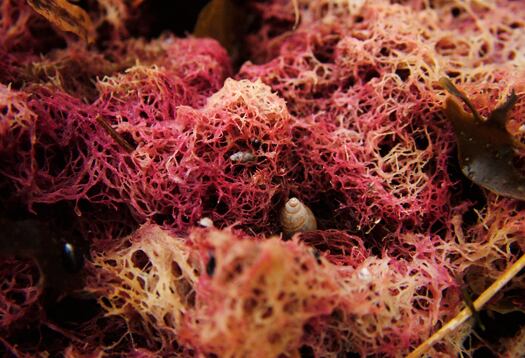It is estimated that there are between 6,000 and 9,000 species of seaweed (macro algae) across the globe, but only around a dozen have been truly exploited as a food component, according to Lynn Cornish – a leading Canadian seaweed researcher.
“I really think it has a terrific level of opportunity, mostly because it’s unexploited…Use in snacks is an extremely good way forward,” Cornish told BakeryandSnacks.com.
“The wave is beginning to crest in terms of use of seaweed in the food sector, but it hasn’t got to that stage in snacks yet…No-one has really done much work with it and that side of seaweed development has yet to come to fruition,” she said.
Plentiful nutrition
Seaweed
I can’t think of anything it is short of...
Seaweed has existed for over 2.5 billion years and as a result has adapted with a plethora of active compounds to survive, Cornish said.
The sea plants are high in fiber, both soluble and insoluble, antioxidants, amino acids, vitamin B12, iron and contain some omega-3. They also have a good binding function because of a high hydrocolloid content.
Previous research has linked seaweed with anti-inflammatory and anti-obesity health functions and has found that certain compounds lower cholesterol, reduce blood pressure and promote healthy digestion.
“I can’t think of anything it is short of…Manufacturers should be looking at making seaweed blends – that way they can accommodate a host of nutritional needs,” she said.

“The calorie content of seaweed is also extremely low, which is an attractive factor for snack manufacturers.”
Most seaweed when formed into an ingredient has very little taste, she said, and some can be very bright in color like red, pink and blue – due to a natural pigment phycobiliprotein in red seaweeds.
Seaweed has vast potential in terms of applications, Cornish said, and would work great as a seasoning for potato chips or popcorn, an alternative inclusion to salt grains on pretzels or ground into a granola bar.
“The textural and flavor opportunities for utilizing macro algae in the daily diet appear to be abundant, and the nutritional benefits are very clear. I believe future research initiatives will, indeed, see the development of novel and healthful seaweed-enhanced foods and snacks.”
But… there is a disconnect
The researcher said that despite all the nutritional and functional properties of seaweed as an ingredient, there is a great disconnect between the harvesting and growing of the plant and use in the food industry.
“I think it’s taking a little while to get manufacturers on strain. They’re looking at it as a food ingredient, but they’re not working with it.”
But the general public has become increasingly aware of the health benefits associated with seaweed, and this offers prospects for manufacturers to tap into, she said.
Cornish suggested targeting mothers or even children with snack products that contain seaweed.
“There’s tons of opportunity and a great variety of seaweeds. The fact that only a dozen species have been exploited spells a really huge opportunity in my eyes,” she said.
